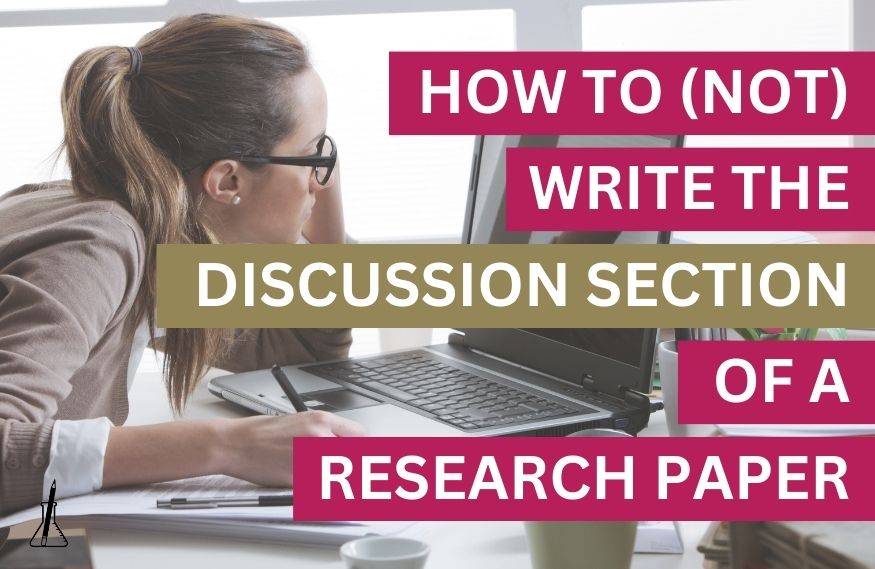What the Discussion section of a scientific paper should and shouldn’t contain.
The Discussion section might well be the hardest part of a paper to write. Yet, so useful! In a great Discussion section, the authors tie the different findings of the paper together, analyse them in the context of existing literature, offer speculations, suggest further research and highlight the study’s significance and possible impact.
I love reading well written Discussions sections – it’s not uncommon that I only really understand the author’s contributions after I’ve read this section, especially when the research is somewhat outside my field of expertise. At the same time, I rarely come across well written discussions of research studies.
Why is that? I think a major factor is that the discussion is the least rigid part of a paper, so many authors are simply at a loss as to what to write. Another reason might be that the authors understand their results and what they mean so well that they cannot imagine what kind of discussion the reader would need in order to make sense out of the findings. It often is hard to take a step back to look at the bigger picture.
The Discussion section in a research paper: The 4 most common mistakes
Therefore, I’ve gathered the four most common mistakes I see scientists make in Discussion sections and offer some advice on how to improve them:
1. Providing paragraphs of background information
Authors who do this probably intend to put their results into context. However, the discussion section is neither the right place to reiterate background info nor to mention it for the first time. The correct place for contextualising your study is the introduction section.
This doesn’t mean that you shouldn’t reference other studies in your discussion. But instead of writing a big block containing only background information, I recommend to refer to other studies in connection with the discussion of your findings. It’s great to mention, for example, whether and why your results and hypotheses agree or disagree with the findings and hypotheses of other studies.
2. Not restating the problem you are solving
Your readers will likely either skip right to your discussion section (I often do this when I’m researching for stories I’m writing about), or they just have just read your results section. In either case, it makes sense to quickly restate why you have researched this topic. For those who skipped your “Introduction” and “Results” sections, reading a quick motivation for your study helps them to put your study into context. Chronological readers will have just deep-dived into the nitty-gritty of your results. By restating the problem you are solving, you help them to zoom out again and remind them of the “why”.

3. Describing the purpose and result of each experiment
Or in other words, don’t confuse what belongs in the “Results” and what in the “Discussion” section. So, skip the “First, we… Then, it was… In order to, we next…”. While I absolutely recommend to state the purpose and result of each experiment, hence guiding your reader through your study’s narrative, it belongs in the “Results” section. Or put differently, once the reader arrives at the discussion section, your story line should be clear. If you compare the story in a scientific paper to a drama, your discussion corresponds to the “Resolution” part of a story. The reader wants to know how things have changed for the characters of your story (aka your model system or study subject) after you obtained your results, how your study has changed the state of the art, or what implications your findings have for an application.
That said, stating the main conclusions of your results in the discussion section is absolutely recommended. But use the remaining space to actually discuss your findings.
4. Too general implication statements
Every discussion section should contain some sentences that outline the significance and importance of your findings. To be fair, most papers contain at least one sentence about this. However, all too often these statements are very general and broad. It’s okay to speculate here about possible applications or a likely impact your findings might have. But try to paint a more precise picture than just saying that your novel material “could be used in nanotechnology applications”. As a reader, I want to know what applications it will be good for specifically? And how exactly will it benefit those applications?
These are the four most common mistakes I see people make in their discussion section. At last, a little word of warning. Sometimes authors prefer to write a combined “Results and Discussion” section. While this can be appropriate in some cases, be careful to not skip discussing your results when doing this and offer an analysis beyond presenting and interpreting your findings.

Procrastinating on your writing? Not feeling like you’re effective at communicating clearly and/or getting desk-rejected a lot?
In this free online training for science researchers, Dr Anna Clemens introduces you to her step-by-step system to write clear & concise papers for your target journals in a timely manner.

